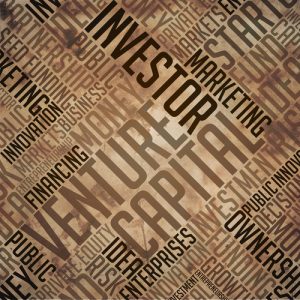This is a guest post written by Todd L. Reding, the President and CEO at Charrette Venture Group. Todd can be reached at todd@charrettevg.com. Charrette Venture Group (CVG) works with new and growing design firms to build stronger businesses by investing resources and applying proven concepts. Learn more about CVG at charrettevg.com.
 If you were starting a company in the tech industry, modern manufacturing or even retail you would encounter a world of business plan competitions, mentor networks, accelerator programs and investor interests. However, the field of design seems to have lost its invitation to the party.
If you were starting a company in the tech industry, modern manufacturing or even retail you would encounter a world of business plan competitions, mentor networks, accelerator programs and investor interests. However, the field of design seems to have lost its invitation to the party.
Investors come in all shapes and sizes. There are the “sharks” that so many recognize from the popular television show (although few ever see the real complexities of the relationship after the deal is made). There are the “angels” who appear to only want to give you money, and let you soar away to new heights with little, or no, contact (by the way, these do not exist.) The large majority are venture groups that want to inject resources into underperforming businesses to help them achieve levels of growth they could have never realized if not for the connections, knowledge, capital and guidance such a firm offers.
Tens of thousands of architecture firms operate with under $500,000 in annual revenue with no experience or knowledge of the requirements to grow beyond that level. They frantically react to the demands of a small business with almost no ability to move into a larger, more profitable and efficient business model.
Inviting an investment from an experienced venture group may be the solution to your small firm struggles. Here are 6 ways your architecture firm may benefit from working with an investor:
Surround yourself with expertise. Many investment firms employ talent across a wide range of expertise. Their interest in your firm brings a diverse team of experts into your organization, so that you have a robust team focusing on the many complexities of the business.
Experience, experience, experience. Most small firm owners are making their first run at leading a business. They are figuring it out as they go. A typical investment firm involves experienced executives who have been through the many cycles of business life. Taking advantage of this experience may help you avoid costly mistakes.
It’s about who you know! Investment firms are working with a wide range of businesses and often seek investments in companies that fit well with their portfolio. This may open doors for additional business. Investors have vast networks they tap to help grow their investment properties.
This may not be your only gig. Creative entrepreneurs often have many “ideas on the shelf” they want to launch some day. Developing a healthy partnership with an investment firm may lay the groundwork to bring those ideas off the shelf and into reality.
Strength during the down times. Firms operating with thin margins and stagnate revenues are more susceptible to the rise and fall of economic conditions. An investor can strengthen a firm when there are financial challenges and can help stabilize their growth.
The power of the network. Some investment firms consider their portfolio of companies a sort of network where businesses can share ideas, common challenges, talent and information. For a small firm; being a part of a larger network can be a rare opportunity.
Regardless of the arrangement; investment firms are assuming risk. Their projected return is intended to be equal to the level of risk. Design firms should seek out those investors that have knowledge about their industry, and present options that reduce risk and maximize the opportunity for growth.
Photo Credit: Shutterstock / Tashatuvango

Leave a Reply